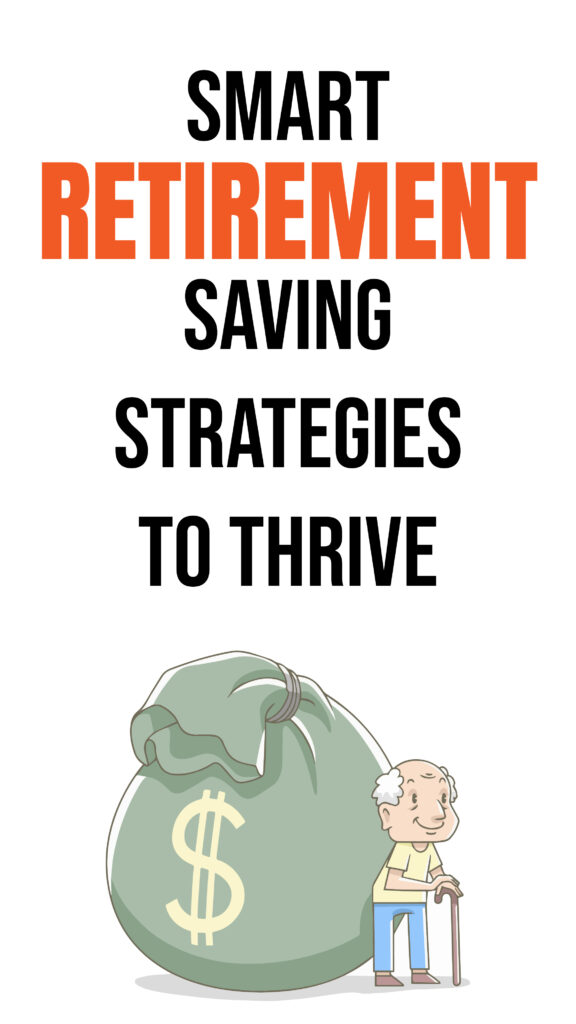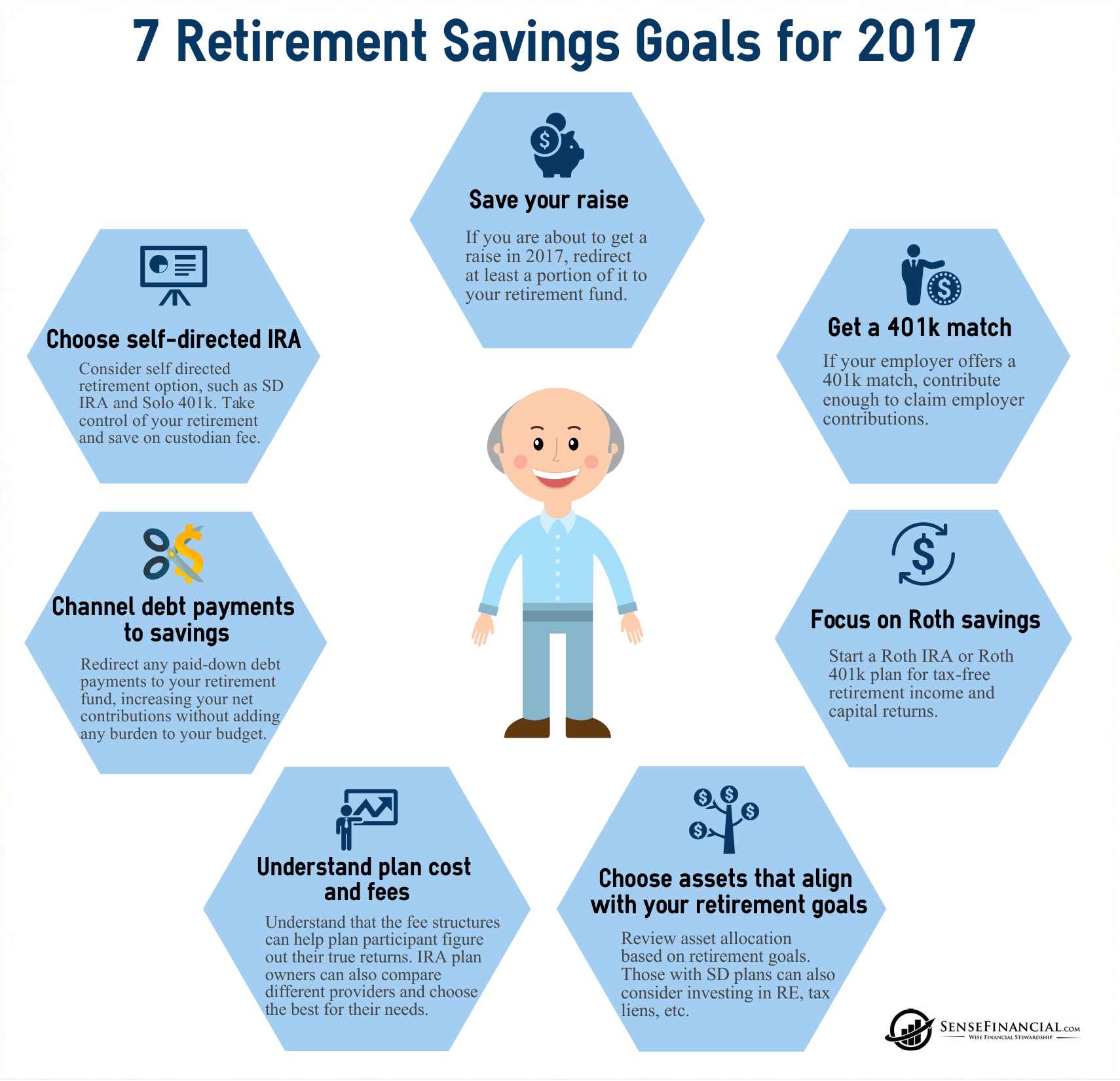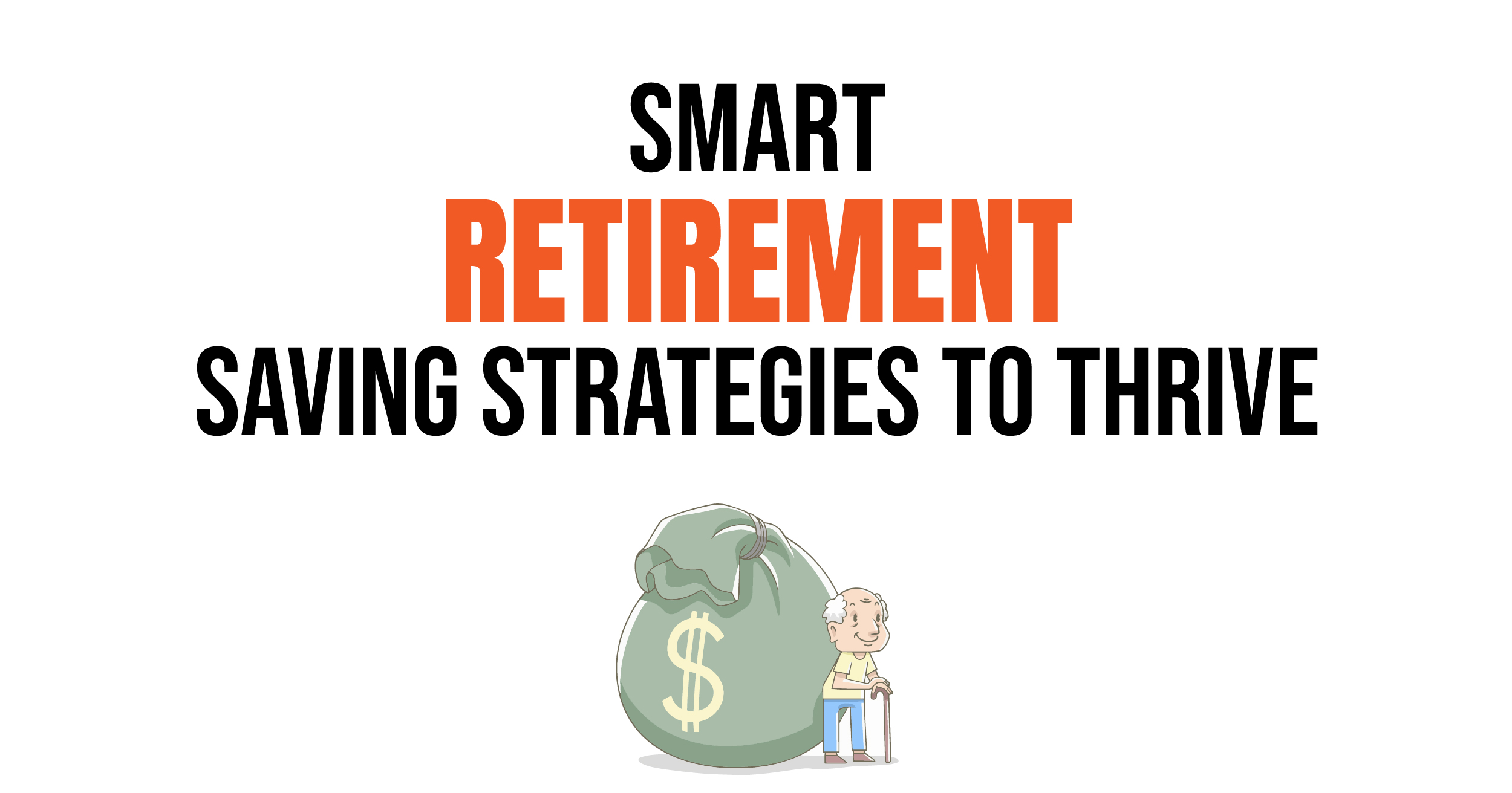To save effectively for retirement, start early and diversify investments. Consistent contributions to retirement accounts are key.
Planning for retirement can seem like a daunting task, yet it’s crucial for securing a financially stable future. Understanding the importance of early savings, exploring various investment options, and making regular contributions towards retirement funds are fundamental strategies. The landscape of retirement planning is vast, encompassing 401(k) plans, IRAs, and other savings vehicles, each offering unique benefits and considerations.
By adopting a disciplined approach to saving, individuals can build a robust financial foundation, ensuring comfort and security in their retirement years. Embracing these strategies not only helps in accumulating wealth over time but also in navigating the complexities of financial planning with confidence.
The Importance Of Early Planning
The Importance of Early Planning cannot be overstated when it comes to saving for retirement. Starting early gives you a head start, making it easier to build a sizable nest egg. This section explores why kickstarting your retirement planning sooner rather than later is crucial.
Why Time Is Your Ally
Time is a powerful ally in growing your retirement savings. The earlier you begin, the less you need to save each month to reach your retirement goals. This is due to the time value of money, which allows your investments to grow over the years.
- Starting at 25 vs. 35 can double your savings by retirement.
- Small, regular contributions grow into significant amounts over time.
- Early planning reduces financial stress later in life.
Compounding Interest Magic
Compounding interest works like magic for your savings. It means earning interest on interest. The sooner you start saving, the more you benefit from compounding.
| Years Saving | Monthly Savings | Total Savings at 65 |
|---|---|---|
| 40 years | $200 | $300,000+ |
| 30 years | $200 | $200,000+ |
This table shows how starting 10 years earlier can significantly boost your savings. The magic of compounding allows your money to grow exponentially over time.
Setting Retirement Goals
Planning for retirement is crucial. One must set clear goals early. These goals guide your savings journey. Let’s break down how to set strong, achievable retirement goals.
Realistic Financial Targets
Begin with your end in mind. Know the amount you need to retire comfortably. Use online calculators for help. Factor in inflation’s impact on future expenses. Consider unexpected costs, like health care. Set milestones for every five years. This makes the goal less daunting. Aim to save a specific percentage of your income monthly. Increase this percentage as your earnings grow.
Evaluating Retirement Lifestyle
Imagine your desired retirement lifestyle. Do you see travel in your future? Maybe a quiet cottage by the sea? List out activities you plan to engage in. Assign a cost to each activity. This helps gauge the savings needed. Remember to consider day-to-day living expenses. Factor in hobbies and leisure. Ensure your savings plan aligns with the lifestyle you envision. Adjust your savings strategy as your vision evolves.
Retirement Savings Accounts
Planning for retirement is key. Retirement Savings Accounts are the tools for a secure future. They come in various forms. Each offers unique tax benefits. Understanding these options is the first step towards a comfortable retirement.
Types Of Retirement Accounts
Different accounts serve different needs. Here’s a look at the most common ones:
- 401(k): Often offered by employers.
- IRA (Individual Retirement Account): Available to individuals.
- Roth IRA: Contributions are after-tax.
- SIMPLE IRA: For small businesses and self-employed.
- SEP IRA: A plan for self-employed and small business owners.
Tax Advantages Explained
Tax benefits can make a big difference. Here’s how they work for retirement accounts:
| Account Type | Tax Benefit |
|---|---|
| 401(k) | Pre-tax contributions reduce taxable income. |
| Traditional IRA | Tax-deductible contributions; taxes deferred until withdrawal. |
| Roth IRA | Withdrawals are tax-free in retirement. |
| SIMPLE & SEP IRA | Contributions are pre-tax, reducing taxable income. |
Choosing the right account involves looking at your current tax bracket and expected future income. This will help determine the best tax advantages for you.
:max_bytes(150000):strip_icc()/saving-for-retirement-with-a-late-start-38e3bb030ef242649b53f1ad16826b10.png)
Credit: www.thebalancemoney.com
Maximizing Employer Benefits
Planning for retirement can feel overwhelming. Yet, smart strategies make it simpler. A key tactic is making the most of employer benefits. These perks can boost retirement savings without straining your budget. Let’s explore how to maximize these opportunities.
401(k) Matches
Employers often match 401(k) contributions. This match is free money. It’s part of your compensation package. Don’t leave this benefit on the table.
- Understand your plan’s specifics
- Contribute at least enough to get the full match
- Consider increasing contributions annually
Other Employer-sponsored Plans
Besides 401(k)s, employers may offer other plans. These include 403(b)s and 457 plans. Some provide pension plans or profit-sharing options. Understand each plan’s benefits to your retirement.
| Plan Type | Benefit |
|---|---|
| 403(b) | Tax-advantaged for nonprofit workers |
| 457 | Deferred compensation for government employees |
| Pension | Guaranteed income in retirement |
| Profit-Sharing | Company shares profits with employees |
Check eligibility criteria for each plan. Enroll in available plans. Review and adjust contributions regularly to ensure they align with retirement goals.
Creating A Diverse Investment Portfolio

When planning for retirement, a diverse investment portfolio is key. It helps manage risks and grow wealth. Let’s explore how to balance risk and reward and understand asset allocation strategies.
Balancing Risk And Reward
A strong portfolio mixes different investments. This balance is crucial for retirement planning. Investors must choose the right mix of risky and safe assets.
Risky assets, like stocks, can offer high returns. Safe assets, such as bonds, provide stability. The goal is to find a mix that suits your comfort with risk.
- Stocks: Potential for high returns but higher risk.
- Bonds: Lower returns, lower risk.
- Real estate: Can offer steady income.
Younger investors often choose more stocks. As retirement nears, they shift towards bonds.
Asset Allocation Strategies
Asset allocation is about spreading investments. It’s important to adjust this mix over time. Your age, goals, and market conditions matter.
| Age Group | Stocks | Bonds | Cash |
|---|---|---|---|
| 20s-30s | High | Medium | Low |
| 40s-50s | Medium | Medium | Medium |
| 60s+ | Low | High | High |
Rebalancing is key. It keeps your portfolio in line with your goals. A regular check-up ensures you stay on track.
Credit: www.fool.com
Healthcare Costs In Retirement
Healthcare Costs in Retirement can be a big worry. It’s smart to plan ahead. As you get older, you might need more medical help. This means more money spent on health. Let’s look at ways to guess these costs and save money.
Estimating Medical Expenses
Guessing your future medical bills is step one. Think about:
- Your current health.
- Family health history.
- Expected health changes.
Use these to make a rough guess. Remember, costs usually go up as you age.
Health Savings Account Benefits
A Health Savings Account (HSA) is a great tool. It lets you save money before taxes. You can use this money for medical costs. Here are its benefits:
- Money goes in tax-free.
- It grows tax-free.
- You can take it out tax-free for medical bills.
HSAs are powerful. They help you save a lot for future health costs.
Reducing Debt Before Retirement
Entering retirement debt-free is a common goal. Less debt means fewer bills and more freedom. Start with a plan to tackle debts. Focus on high-interest debts first. This strategy boosts retirement savings. It also reduces financial stress.
Strategies To Pay Off Debt
Several approaches can make debt disappear. Let’s explore.
- Debt Snowball: Pay small debts first, then bigger ones.
- Debt Avalanche: Clear high-interest debts first for savings.
- Consolidation: Combine debts into one with lower interest.
- Extra Payments: Use bonuses or tax returns to reduce debts.
- Budget Review: Cut unnecessary expenses to free up cash.
Stick to the plan. Regular payments are key. Also, consider new income sources. A part-time job can help. Selling unused items works too.
Impact On Retirement Savings
Paying off debt affects retirement funds. Here’s how:
| Without Debt | With Debt |
|---|---|
| More money to save | Less money to save |
| Invest more in retirement accounts | Invest less due to debt payments |
| Peace of mind | Financial stress |
Reducing debt means more cash for retirement accounts. Compounding interest grows savings faster. This makes a secure future. Live better in retirement with no debt.
Passive Income Streams
Retirement calls for smart planning and robust saving strategies. Passive income streams play a crucial role. They offer financial security without daily effort. Let’s dive into two lucrative options.
Real Estate Investment
Real estate stands as a solid investment choice. It can generate consistent rental income. Over time, property values typically increase. This makes real estate a dual benefit investment.
- Buy and Hold: Purchase property and rent it out for steady cash flow.
- REITs: Invest in Real Estate Investment Trusts if direct ownership seems hefty.
Dividend-paying Stocks
Stocks that pay dividends offer a regular income stream. They represent a share in company profits. Choose companies with a history of stable payouts.
| Stock Type | Benefits |
|---|---|
| Blue-Chip Stocks | Reliable dividends, lower risk |
| High-Yield Stocks | Higher income, potentially higher risk |
Monitoring And Adjusting Your Plan
Crafting a retirement plan is like setting a sail on a long voyage. It requires ongoing attention and adjustments. Monitoring and adjusting your plan ensures that you stay on course towards your retirement goals.
Regular Financial Reviews
Performing regular financial reviews is crucial for retirement planning. Schedule these check-ins annually. They are like your financial health check-up.
- Examine investment performance.
- Assess savings rate and adjust if needed.
- Review retirement goals against current trends.
Use tools like spreadsheets or apps to track progress. This makes reviews effective and less time-consuming.
Adapting To Life Changes
Life is full of surprises. Your retirement plan should adapt to these changes.
| Life Event | Action |
|---|---|
| Job Change | Update contribution levels. |
| Marriage or Divorce | Reassess beneficiaries and savings targets. |
| New Child or Grandchild | Consider education savings accounts. |
Seek advice from a financial planner when major life events occur. They can help you adjust your plan professionally.

Credit: www.sensefinancial.com
Working With Financial Advisors
Planning for retirement can feel overwhelming. A financial advisor turns this challenge into a manageable task. They create clear paths toward your golden years. Let’s explore how to choose a suitable advisor and understand their benefits.
Choosing The Right Advisor
Finding a financial advisor means matching services to your needs. Look for credentials like CFP or CPA. Check their history for any disciplinary actions. Ensure they have experience with retirement planning.
Interview multiple candidates. Ask about their approach. Compare fees and services. Select someone who fits well with your financial goals.
Benefits Of Professional Guidance
Financial advisors bring expertise to the table. They offer personalized plans. They stay updated on laws and strategies. This means better retirement savings for you.
- Save time – Advisors do the heavy lifting.
- Reduce stress – Experts handle complex issues.
- Improve outcomes – They aim for optimal growth.
An advisor can prevent costly mistakes. They help you avoid common pitfalls. Trust in their guidance for a secure retirement.
Frequently Asked Questions
What Is The $1000 A Month Rule For Retirement?
The $1000 a month rule for retirement suggests saving $240,000 for every $1000 of monthly income you need. This method aims to ensure financial stability in retirement by encouraging proactive savings.
What Is The Best Way To Start Saving For Retirement?
Starting early is key to retirement savings. Begin by setting clear goals and creating a budget to manage expenses. Opt for automated contributions to a retirement account like a 401(k) or an IRA. Regularly review and adjust your savings plan to ensure it meets your evolving needs.
What Is The 3 Rule In Retirement?
The 3% rule in retirement suggests withdrawing no more than 3% of your retirement savings annually to ensure funds last throughout retirement.
What Is The 4 Rule For Retirement Savings?
The 4% rule for retirement savings suggests that you can withdraw 4% of your portfolio annually for a comfortable retirement without depleting your funds.
Conclusion
Embracing effective retirement saving strategies is vital for a secure future. Start early, maximize contributions, and diversify investments for the best results. Remember, the journey to a comfortable retirement is steady and requires consistent effort. Secure your golden years now; your future self will thank you.

